Introduction
Counterfeiting remains a pervasive challenge across diverse industries, impacting sectors ranging from pharmaceuticals and cosmetics to electronics and fashion. Beyond its economic implications, this covert industry poses significant threats to consumer safety, environmental sustainability, and social welfare.
However, a solution exists. Robust anti-counterfeit strategies emerge as a crucial defence, providing businesses with effective tools to ensure the authenticity and integrity of their products throughout the intricacies of the supply chain. Anti-counterfeit solutions encompass a spectrum of technologies and processes designed to prevent, detect, or deter the production and distribution of counterfeit or unauthorised goods. From tangible features like holograms and RFID tags to cutting-edge digital platforms like blockchain and AI, these solutions facilitate traceability and verification.
This blog sets out to demystify the realm of anti-counterfeit solutions, exploring the benefits and challenges faced by brands in their pursuit of authenticity. Join us as we shed light on the revolutionary technologies reshaping the anti-counterfeiting landscape. By embracing effective anti-counterfeit measures, businesses not only safeguard their brand reputation, customer loyalty, and revenue but also contribute to the creation of a safer and more sustainable world.
Front-Runners in the Battle: Exploring Key Anti-Counterfeit Solutions
In the battle against counterfeiting, the market offers a range of innovative solutions designed to safeguard businesses and consumers from the pervasive threat. As highlighted in a Forbes article, the staggering estimated annual sales of counterfeit goods, ranging from $1.7 trillion to $4.5 trillion, underscore the urgency for robust anti-counterfeiting measures. This illicit industry not only poses economic challenges but also leads to a global loss of 2.5 million jobs, making it a critical concern for decision-makers and business owners alike, especially in sectors such as security printing, anti-counterfeiting, and brand authentication.
To address this menace, several anti-counterfeiting solutions have emerged as front-runners in the market:
Holograms
Holograms are three-dimensional images created through the meticulous layering of materials, producing a visually striking effect. Their popularity stems from being cost-effective and easily recognizable. Advanced holographic techniques often involve incorporating microtext, intricate patterns, and diffractive optics, enhancing their complexity and security features. Despite their effectiveness, the risk lies in the continuous advancements of replication technology, which may challenge their resilience over time.
QR Codes
Quick Response (QR) codes have gained widespread adoption due to their versatility and ease of use. These two-dimensional barcodes can store a significant amount of data, making them valuable for product traceability. Error correction algorithms ensure accurate scanning, even when codes are partially damaged. Encryption options can be integrated for added security. However, their vulnerability to replication using advanced printing technology is a notable concern, requiring businesses to balance convenience with security.
RFID Tags
Radio-frequency identification (RFID) tags are small electronic devices that communicate via radio waves with readers. They provide real-time tracking and authentication, and each tag carries a unique identifier, preventing duplication. Some advanced RFID tags may include tamper-evident features, further enhancing security. While RFID technology offers robust anti-counterfeiting capabilities, businesses must consider the higher implementation costs associated with these sophisticated tracking solutions.
Invisible Ink
Invisible ink is a cutting-edge solution that remains unseen by the naked eye, requiring specialised devices such as UV lights or infrared scanners for detection. Formulated with compounds that keep the ink invisible, it allows for intricate customization, including hidden text, images, and patterns. The appeal lies in its covert nature, providing an additional layer of security. However, the need for specialised equipment and higher implementation costs may pose initial challenges for businesses. Additionally, the information encoded in invisible ink is only visible when exposed to the appropriate detection method, limiting its visibility to authorised personnel.
Each solution presents a unique set of advantages and challenges. While holograms offer recognizability and complexity, they can be vulnerable to advanced technology. QR codes provide easy scanning and supply chain traceability but face the risk of replication. RFID tags offer secure tracking but come with higher costs. Invisible ink, although effective, demands specialised equipment and incurs additional expenses. Choosing the right solution requires careful consideration of specific business needs and priorities in the ongoing fight against counterfeiting.
Navigating Challenges and Limitations in Anti-Counterfeiting Measures
The utilisation of holograms as an anti-counterfeiting solution faces challenges in the wake of technological advancements. The once seemingly impenetrable nature of holograms can now be replicated with advanced equipment, diminishing their effectiveness. Additionally, their primary reliance on visual elements restricts the amount of data they can convey, posing limitations in communicating extensive information.
In the realm of QR codes, despite their widespread use, a significant challenge lies in their vulnerability to replication using easily accessible technology. While efficient for product tracking, QR codes lack the multi-layered security features offered by more advanced solutions, potentially leaving them susceptible to counterfeiting attempts.
RFID tags, although robust in tracking products throughout the supply chain, encounter challenges such as high implementation costs. The initial investment required for RFID technology, including tags and readers, can be a substantial barrier for businesses, particularly smaller enterprises. Additionally, the potential for interference in certain environments can lead to inaccuracies in tracking and identification.
The application of invisible ink as an anti-counterfeiting measure introduces its own set of challenges. While highly secure, the implementation of invisible ink can be costly, posing financial considerations, especially for smaller businesses. Moreover, the requirement for specialised equipment for the detection of invisible ink presents logistical challenges, potentially limiting its widespread adoption.
To navigate these challenges effectively, businesses may consider adopting a holistic approach by combining multiple anti-counterfeiting solutions. For instance, pairing holograms with digital solutions like QR codes could enhance overall security. Continuous innovation and staying abreast of technological advancements also play a pivotal role in addressing limitations. Moreover, considering specific business needs, a tailored implementation approach ensures the selection of the most fitting anti-counterfeit solution, mitigating challenges and enhancing overall effectiveness.
NanoMatriX’s Bespoke Anti-Counterfeit Solutions For Product Authentication
In the relentless fight against counterfeiting, NanoMatriX Technologies proudly stands as a trailblazer – delivering bespoke anti-counterfeiting solutions since our inception in 2004, evident in our innovative offerings designed to secure authenticity and integrity across diverse industries.
MatriX-Hologram™ Security Labels: A Multi-Faceted Defence
MatriX-Hologram™ Security Labels stand out as a robust response to security challenges. These labels feature customizable holographic designs with resolutions up to 120,000 dpi, providing enhanced anti-counterfeiting protection. Incorporating overt, covert, and forensic security elements, these labels offer multiple layers of defence. Real-time product tracking and authentication are facilitated through QR codes and barcodes, aligning with modern technology demands.
- Resolution Precision: MatriX-Hologram™ Security Labels offer an impressive resolution of up to 120,000 dpi, ensuring intricate holographic designs for enhanced anti-counterfeiting protection.
- Multi-Level Security Elements: Equipped with overt, covert, and forensic security features, these labels provide a comprehensive defence strategy against determined threats, addressing multiple layers of potential vulnerabilities.
- QR Code and Barcode Integration: The integration of QR codes and barcodes facilitates real-time product tracking and authentication, aligning with modern technology demands.
- Versatility in Application: These labels are designed to be versatile, and capable of application on various surfaces including metal, plastic, glass, paper, and foil, ensuring widespread use across different product types and industries.
- Customizable 3D Elements: The labels offer customizable 3D holographic design elements, allowing for intricate details that enhance security and make each label unique.
TrackMatriX Lock: Ensuring Unparalleled Security and Traceability
TrackMatriX Lock is an innovative security solution that safeguards your brand against counterfeits. This exceptional system utilises cutting-edge digital measures to establish an additional layer of discrete data protection, accessible only through a custom encryption key. With an impressive track record of safeguarding over half a billion items worldwide, TrackMatriX Lock is the trusted choice for industry leaders globally.
- Enhanced 2D Barcode Technology: TrackMatriX Lock employs enhanced 2D barcode technology, providing a sophisticated foundation for secure data encoding and decoding.
- Concealed Encrypted Data: The system incorporates an additional layer of concealed encrypted data, ensuring robust protection against unauthorised access and counterfeiting attempts.
- Advanced Track-and-Trace Capabilities: With advanced track-and-trace capabilities, the solution enables superior monitoring and control, offering insights into the entire product lifecycle.
- Compatibility with Popular 2D Barcodes: The system is compatible with widely-used 2D barcodes such as Data Matrix, QR, Aztec, and MaxiCode, ensuring flexibility in integration and compatibility with existing systems.
- Effortless Replacement of Barcodes: TrackMatriX Lock allows for the effortless replacement of existing barcodes, amplifying logistics and marketing efforts with invaluable insights and minimising disruptions during implementation.
SecureMatriX RFID Tag: Safeguarding Against Counterfeiting and Theft
SecureMatriX RFID Tag offers an effective solution with tamper-evident NFC and UHF tags connected to a cloud-based track and trace platform. It provides enhanced security features, reducing the risk of fraud and making it easier to detect counterfeit goods in the market.
- Tamper-Evident NFC and UHF Tags: The RFID tags are tamper-evident, making duplication virtually impossible and providing an initial layer of defence against counterfeit attempts.
- Cloud-Based Track and Trace Platform: With tags connected to our cloud-based track and trace platform, the solution enables global real-time tracking, providing actionable insights into product movement throughout the supply chain.
- Seamless Integration with APIs: The RFID tags seamlessly integrate with existing inventory systems via ready-to-use APIs, streamlining the implementation process and ensuring compatibility with established business operations.
- Bank-Level Security: The RFID tags offer bank-level security, safeguarding both products and data from threats. This level of security is essential for protecting sensitive information and ensuring the integrity of the entire system.
- Customizable Landing Pages: The ability to create customizable landing pages enhances customer engagement and builds trust. This feature allows for personalised interactions, reinforcing the authenticity of the product.
MatriX-Thermochromic Inks: Precision in Counterfeit Detection
MatriX-Thermochromic Inks are a pioneering solution in the realm of thermochromic technology with invisible, colour-changing effects that enable reliable counterfeits and false claims detection. Our commitment to innovation and security is evident in the unique features of MatriX-Thermochromic™ Inks, designed to provide comprehensive protection against counterfeiting attempts.
- Temperature Activation Precision: MatriX-Thermochromic Inks redefine precision with temperature activation points, ensuring swift and accurate detection of temperature-induced colour changes.
- Microtext for Branding: The inks boast microtext for discreet yet powerful branding, adding an extra layer of authenticity to security prints and ensuring subtle yet comprehensive protection against counterfeiting.
- Reversible Fluorescence for Authentication: Harnessing the power of reversible fluorescence, these innovative pigments provide swift and foolproof authentication, leaving no room for doubt and effectively combating counterfeiting.
- Resistance to External Elements: The pigments offer enduring protection with resistance to abrasion and UV light, maintaining product integrity even in harsh conditions, making them suitable for a wide range of applications.
- Customizable Formulations: The ability to customise pigment formulations allows for tailored solutions that align precisely with specific security printing needs, providing flexibility and adaptability to diverse requirements.
Conclusion
In the ceaseless pursuit of safeguarding product authenticity, the battle against counterfeiting resonates as a vital imperative across industries. Navigating a landscape rife with innovative anti-counterfeit solutions, ranging from traditional holograms to avant-garde technologies like RFID tags and invisible inks, underscores a collective commitment to fortify brand reputation, ensure consumer safety, and bolster global economies. Recognizing the multifaceted nature of this challenge, businesses are embracing a nuanced and tailored approach, strategically deploying a fusion of these solutions to enhance their defence mechanisms.
At the forefront of this dynamic landscape stands NanoMatriX Technologies, a trailblazer since 2004, offering a comprehensive suite of bespoke solutions to combat illicit activities. From the resilience of MatriX-Hologram™ Security Labels to the discrete data protection of TrackMatriX Lock, the global tracking capability of SecureMatriX RFID Tag, and the groundbreaking features of MatriX-Thermochromic™ Inks, our innovative portfolio redefines the landscape of product authentication. NanoMatriX stands not just as a provider of cutting-edge defences against counterfeiting but as a dedicated contributor to a secure and trusted global marketplace, shaping the future of anti-counterfeit solutions.
FAQs
Q1: What is the global impact of counterfeiting, and why is it a concern?
Answer: Counterfeiting has a staggering global impact, reaching $509 billion in 2016, constituting 3.3% of world trade. Beyond economic implications, it poses threats to consumer safety, environmental sustainability, and social welfare, making it a critical concern for businesses and governments worldwide.
Q2: How do holograms contribute to anti-counterfeit measures, and what challenges do they face?
Answer: Holograms provide cost-effective and easily recognizable visual security features. However, their effectiveness is challenged by advancements in replication technology over time. The reliance on visual elements also limits the amount of data they can convey.
Q3: How does NanoMatriX’s TrackMatriX Lock enhance product security and traceability?
Answer: TrackMatriX Lock utilises cutting-edge digital measures, including enhanced 2D barcode technology and concealed encrypted data, ensuring robust protection against unauthorised access and counterfeiting attempts. With advanced track-and-trace capabilities, it offers superior monitoring and control throughout the product life cycle.
Q4: What sets MatriX-Thermochromic™ Inks apart, and how can they be customised for specific needs?
Answer: MatriX-Thermochromic™ Inks offer invisible, colour-changing effects for reliable counterfeit detection. They stand out with temperature activation precision, microtext for branding, and resistance to external elements. The ability to customise pigment formulations allows tailored solutions to align precisely with specific security printing needs.


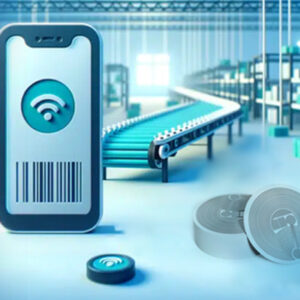






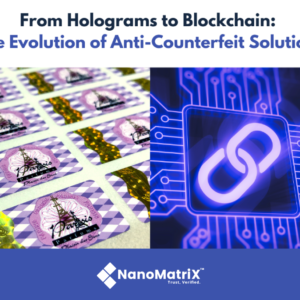

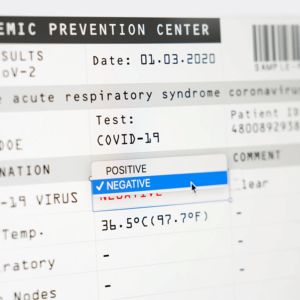
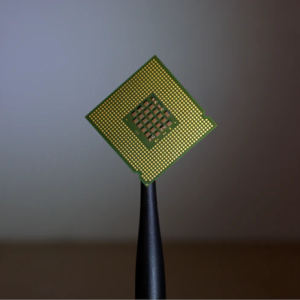
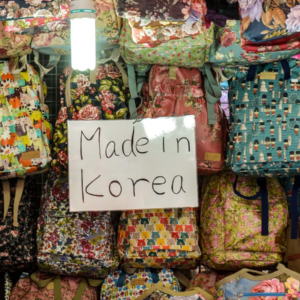



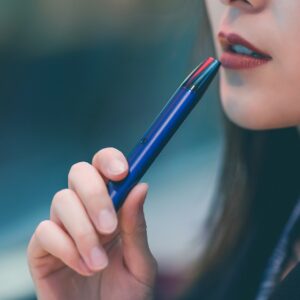


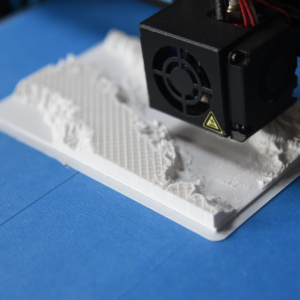
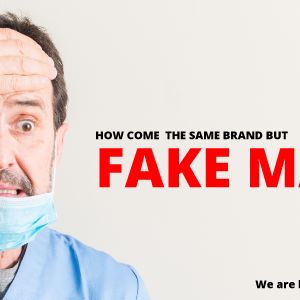
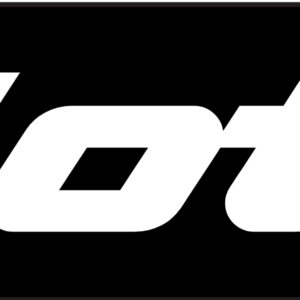


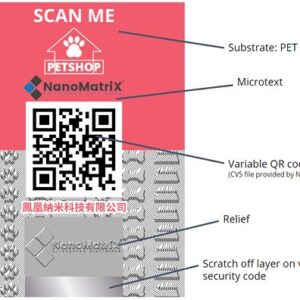


Recent Comments